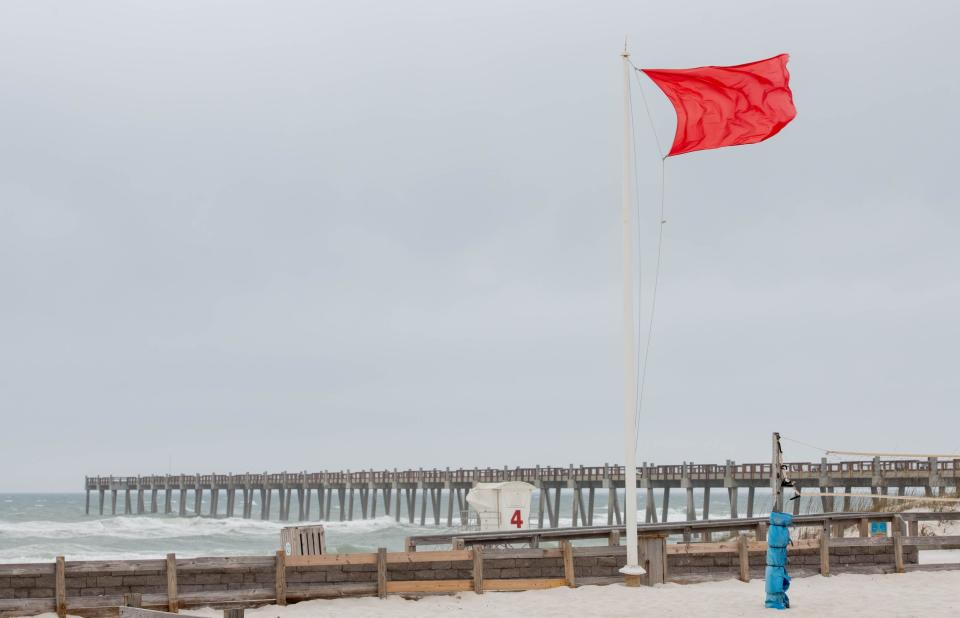Heading to Pensacola Beach? Make sure you're familiar with Florida's beach flag system
If you plan to head to Pensacola Beach this summer, you'll want to make sure you're familiar to the beach flag system. Beaches across Florida use flag systems to communicate surf and tide conditions to beachgoers in a way that is easy to decipher.
If you're familiar with traffic lights, you'll be able to pick up on what each flag means intuitively. Green flags mean the water is safe to enter while red flags mean there are dangerous conditions.
Here’s what you need to know about Florida’s warning flag system.
What do red and yellow flags mean at Florida beaches?
Florida beaches tend to use four colors to tell beachgoers current tide and surf conditions: Red, yellow, green and purple. Here's what they mean.
Green flag: Low hazard — conditions are calm, but beachgoers should still exercise caution.
Yellow flag: Medium hazard — conditions present a moderate hazard. Swimmers should exercise extra caution.
Red flag: High hazard — indicates high surf and/or strong currents. Some beach communities will prohibit swimming and wading, so be sure to check local guidelines. At Pensacola Beach, a red flag means wading and swimming is prohibited in the Gulf of Mexico.
Double red flag: Water is closed to the public including surfers — typically used during hurricanes or other natural disasters.
Purple flag: Dangerous marine life — man o’ war, jellyfish, stingrays, etc. pose a potential hazard to swimmers.
What does it mean if the beach has no flags flying?
Beachgoers shouldn’t assume an absence of flags indicates safe conditions. Most local municipalities update flag conditions on their website daily.

Not all Florida beach flags are the same
Kind of. In 2005, the Florida Legislature adopted a uniform flag system and amended section 380.276, F.S. to require all public beaches to display warning flags using only the flags developed for the state’s warning program.
Specific rules regarding each color may change from community to community. For instance, swimming and wading are prohibited during red flag conditions on Pensacola Beach. However, all Florida beaches use the same flag colors indicating the same conditions.
What beach flag color is used for rip currents?
Florida does not use beach flags to specifically warn of the presence of rip currents. Florida Coastal Management Program works with local government and public parks to provide educational signs if funds are available.
The National Weather Service has also created an experimental beach forecast page that provides a color-coded map indicating the forecast rip current risk level that is available to the public.
To use the map, head over to https://www.weather.gov/beach/. Users can click on beach umbrellas to check the current beach forecast. Greyed-out umbrellas do not have a current forecast.
Where can I find beach flags?
MyEscambia.com has a web page dedicated to its flag system. This page will provide you with current conditions on Pensacola Beach, water temperature and tomorrow's flag forecast. Visiting this page is probably the quickest and easiest way to see what flags are flying.
If you're at the beach and don't have easy access to your cellphone, you can still find the physical flags at various locations along Pensacola Beach. Here's where you can find them:
South of the Bob Sikes Toll Bridge
Next to the Casino Beach Pavilion
On the Gulf Fishing Pier
One mile east of Portofino Island Resort
Park East
Park West
All lifeguard towers
This article originally appeared on Pensacola News Journal: What do Florida's beach flags mean? Here's a quick explanation
